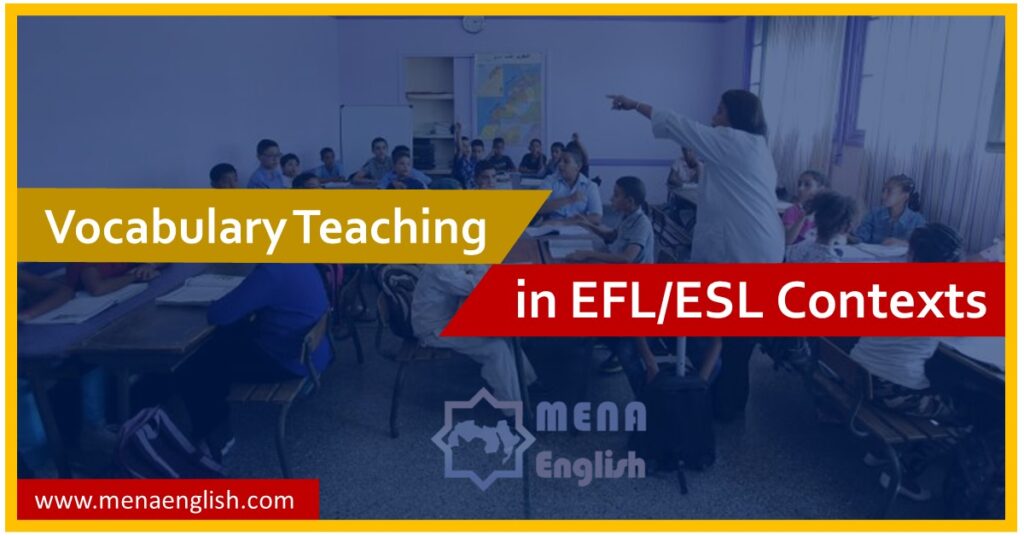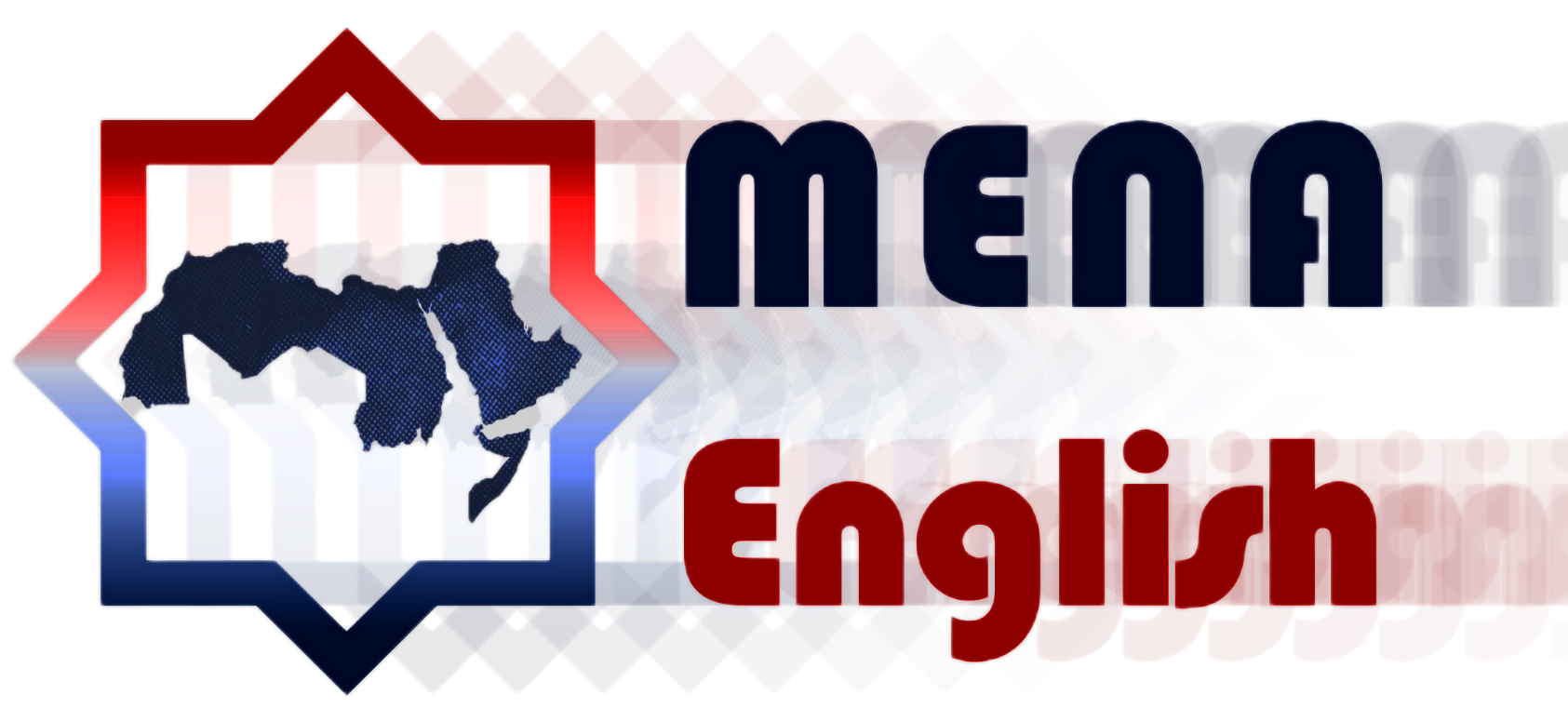
By: Mourad EL HANAFI
Research has massively contributed to improving the teaching of vocabulary in L2 contexts. This essay discusses some key points that have preoccupied a great body of literature as regards the teaching of vocabulary. In so doing, the essay initially provides some definitions of what is to be perceived as vocabulary before it presents different general considerations in teaching vocabulary in L2 contexts. In the same vein, the essay throws light on the selection of appropriate vocabulary to teach in an L2 context. That is, it discusses theoretically-informed criteria teachers and textbook designers can make recourse to in choosing ‘words’ to teach in instructional settings. Looking at teaching vocabulary from a learner’s perspective, the essay also touches upon how vocabulary is learned, analyzing a sample of techniques used in L2 classrooms to see how well they draw on pedagogically-sound premises. Last but not least, assessing vocabulary knowledge is also within the scope of this essay. In this regard, the discussion revolves around tests and the range of purposes they have in assessing vocabulary. In conclusion, the essay recapitulates the main points discussed all along and provides some suggestions for improving the teaching of vocabulary in L2 context, then closes with issues in a form of open-ended questions.
There are a number of issues in what is to be considered and counted as vocabulary. In a simplistic view, Barcroft (2015) defines vocabulary or lexicon as “all of the words, word parts (e.g., prefixes, suffixes), and lexical phrases (e.g., fixed strings of words such as The thing of it is . . . ) that she or he has acquired at any given point in time.” In Barcroft’s view, all the language components that convey meaning are to be perceived as vocabulary. In his booklet “Vocabulary in Language Teaching”, Barcroft (2015) gives abundant examples of vocabulary types: free morphemes, bound morphemes, inflectional morphology, derivational morphology, etc. Nation and Meara (2019), on the other hand, assert that defining vocabulary is a more challenging question in vocabulary studies. Still, giving partly satisfactory answers necessitates specifying the reasons for which vocabulary is defined. For instance, in measuring how fast someone can speak or read, vocabulary is recognized and counted in terms of tokens (everything is counted, including the words that occur twice or more). However, to measure how much vocabulary a learner has acquired, the useful way is counting by word types (repeated words are not counted). The problem with word type measurement is that it does not count for identical types that have different meanings. For vocabulary learning purposes, Nation and Meara (2019) suggest that the most conservative way is to count lemmas as they consist of “the stem form and inflected forms that are of the same part of speech.” (p. 34). To sum up, defining vocabulary is context-dependent.
Teaching vocabulary focuses mainly on three key components: form, meaning, and mapping. Conventionally, any typical vocabulary lesson includes a variety of activities that serve the aforementioned components, otherwise learners are likely to misuse the vocabulary they learn. To start with, form here means the acoustic representation of a vocabulary item (also known as the acoustic form), i.e. how a vocabulary item is pronounced in different contexts, whereas meaning refers to all of the semantic properties conveyed by and associated with a word or lexical phrase (Barcroft, 2017). As regards mapping, it refers to how the mental representations of form and meaning are connected. This connection can sometimes happen in a contiguous manner. That is, a teacher, for instance, can say the word ‘horse’ and simultaneously shows his/her students a picture on which there is a horse to help them associate the acoustic form (horse) with the meaning (animal of a specific type). To help students learn the acoustic form the right way, drilling can partly serve the purpose. Moreover, Nation and Meara suggest four strategies that help with finding the meaning of unknown words: (1) guessing from context, (2) learning from word cards, (3) using word parts, and (4) using dictionary. Instructors should not always help learners map form to meaning through explicit activities. Alternatively, learners can depend on certain textual cues (tokens) to guess the meaning of certain forms. As for the use of word cards, there is evidence in research that learners learn words better if the meaning of a keyword is combined with an image (Nation, 2001). Learners can also break words into parts in a bid to find meaning. Because words can bear more than one meaning, using dictionary can help learners learn different meanings of one form. Learning form, meaning, and mapping should be catered for with the activities students can carry out in a tutored setting and strategies they can use in an autonomous way.
The selection of vocabulary to teach depends on a number of criteria. Choosing vocabulary to teach is determined by the needs of the learners (Nation and Meara, 2019), the usefulness of the vocabulary items, size, and relevance. As the subjective needs of learners differ, the glossary of vocabulary items to teach can differ as a corollary. However, there is vocabulary that responds to learners’ needs, but they rarely stumble upon a situation where they can use it. Accordingly, vocabulary to teach should be useful. To identify the usefulness of vocabulary items, a relevant corpus is resorted to in order to discover their frequency and range. The high-frequent vocabulary items need to be the first and main vocabulary goal of learners. Furthermore, the cognitive development of learners necessitates determining what and how much vocabulary to teach. In such cases, vocabulary is categorized in terms of tiers (Tier 1, Tier 2, and Tier 3). Each level can have a tier of vocabulary to learn over a period of time. Approaching the teaching of vocabulary through tiers can help avoid huge differences between vocabulary lessons in contexts where different textbooks are used for the same level, and most importantly if learners are tested on vocabulary (Beck, McKeown, & Kucan, 2001). In the Moroccan context, for instance, second-year baccalaureate textbooks sometimes include different vocabulary items though students will take the same exam by the end of the year, which may have a negative impact on their performance. To conclude, the more well-founded the selection of vocabulary to teach is, the more effective a vocabulary course becomes.
Learners learn vocabulary in different ways and contexts. In L2 contexts, for instance, learning certain vocabulary items can be easier as the meaning of the form is already there thanks to L1, what is only missing here is the mapping to the new form. Learners can learn vocabulary either intentionally or incidentally. Direct vocabulary learning, i.e. intentional vocabulary learning, is relatively effective as noticing and attending to language learning generally makes learning effective (Schmidt, 1990 as cited in Nation & Meara, 2019). However, vocabulary learning can take other forms. Learners can learn vocabulary from meaning-focused input, i.e. through reading and listening. As such, learners need to encounter a very large quantity of input so that they can have more textual cues to rely on to learn new vocabulary incidentally. Schmidt (2008) points out that most research shows the advantage of integrating both intentional and incidental vocabulary learning approaches in teaching. Vocabulary learning can also take place through meaning-focused output, i.e. in speaking and writing. Speaking activities that involve group work provide learners with opportunities to negotiate the meaning of unknown words successfully (Newton, 1995 cited in Nation and Meara, 2019). A communicative writing task can also serve a similar purpose. While teachers can use a wide range of activities in vocabulary lessons, they should strike a balance between the activities that cater for both direct and incidental vocabulary learning.
Assessing vocabulary knowledge serves a range of pedagogical purposes. If a vocabulary test, for instance, is administered for placement purposes, it may focus on measuring only the size. A vocabulary test or test section can also focus on what learners have just learned. In such tests, instructors employ different techniques, one of which is multiple choice. It is widely used but has limitations. For instance, a test taker can choose the right answer by the process of elimination. In measuring the size of vocabulary knowledge learners have learned, Read (2000) points out that testers need to set up conventions they should abide by along the way in assessment. That is, they should determine what counts as a word, how to choose words to test, and how to find out whether the selected words are known. One of the limitations of vocabulary tests that target size is that they can only give a superficial indication of how well a word is known as test takers are required to identify one meaning through synonymy. Alternatively, vocabulary tests can, for instance, include sections where test takers are required to explain certain vocabulary items to see how many meanings of one word they know. The issue of assessment is complicated no matter what skill is tested. However, assessors can devise tests with fewer infelicities if they control the variables well.
The essay touches upon a number of key points in vocabulary teaching. Starting from definitions, it is clear that vocabulary means different things to different people. Moreover, vocabulary includes miscellaneous items to teach and test learners on. Accordingly, instructors should employ a variety of techniques and use different activities so that learners can learn vocabulary incidentally and intentionally. Selecting vocabulary to teach is also an issue that has preoccupied researchers for so long. While we make sure that our selection of vocabulary items to teach draws on objectives needs, it is legitimate to ask whether the selection can respond to some specific subjective needs of learners. For instance, in adopting the Tiers approach to selecting vocabulary to include in textbooks or vocabulary courses, can learners have chance to see their textbooks feature some vocabulary items on their cultures? Put differently, if Tiers approach were to be adopted as a basis for selecting vocabulary to include in Moroccan English second-year baccalaureate textbooks, can vocabulary lessons still be individualized and relate to students’ cultures, especially that there is need for the regionalization of textbooks?
References
Barcroft, J. (2015). Vocabulary in Language Teaching. doi: 10.4324/9781315679549
Beck, I. L., & Mckeown, M. G. (2001). Educational Psychology Review, 13(3), 225–241. doi: 10.1023/a:1016671722022
Nation, P., & Meara, P. (2019). Vocabulary. An Introduction to Applied Linguistics, 35–54. doi: 10.4324/9780429424465-3
Nation, I.S.P. (2001) Learning Vocabulary in Another Language. Cambridge: Cambridge University Press. A substantial survey of vocabulary teaching and learning
Read, J. (2000). Assessing Vocabulary. Cambridge University Press.
Schmitt, N. (2000). Vocabulary in Language Teaching. Cambridge: Cambridge University Press. An accessible introduction to vocabulary teaching and learning.
